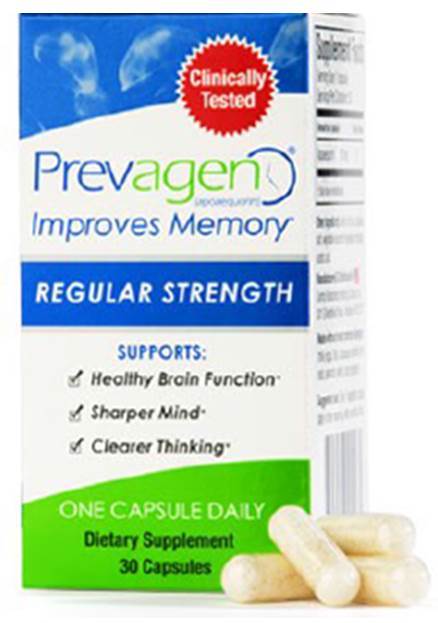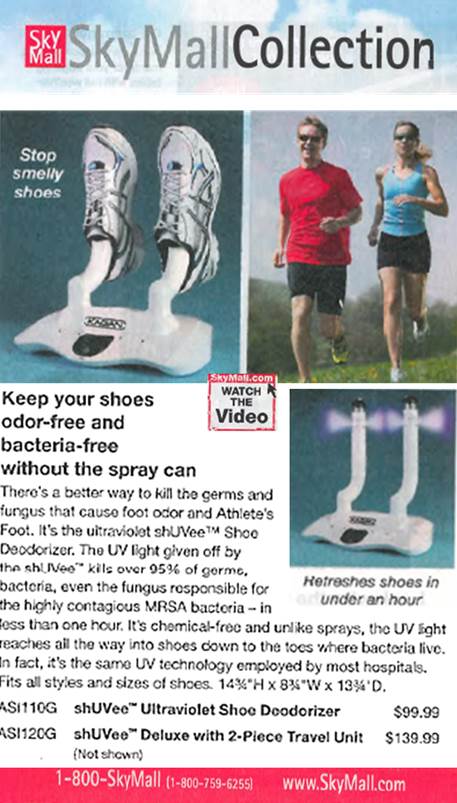- “Love Stinks” – when a scammer is involvedby lfair on February 13, 2024 at 4:23 am
“Love Stinks” – when a scammer is involved lfair February 12, 2024 | 11:23PM “Love Stinks” – when a scammer is involved By Lesley Fair I’ve had the blues, the reds, and the pinks.One thing’s for sure: Love stinks.Far be it from us to criticize love on Valentine’s Day, but “Love Stinks” – the 80s hit by the J. Geils Band – describes what the FTC Consumer Sentinel Data Book tells us about the injury inflicted by romance scammers. And one statistic is particularly surprising. The Consumer Sentinel Data Book categorizes reports of romance scams under the larger category of imposter scams. The number of romance scam reports received in 2023 – 64,003 – is smaller than the 474,731 reports received about business imposters and 228,282 about government imposters. But reported losses to romance scams total $1.14 billion, with median losses per person of $2,000 – the highest reported losses for any form of imposter scam. That suggests that when romance scammers have their hooks in a person, the financial consequences can be devastating.The FTC has advice about how to spot and stop a romance scam.Never send money, crypto, gift cards, bank or wire transfers, or anything else to anyone you haven’t met in person. Scammers’ tactics can morph over time, but according to 2022 reports to the Consumer Sentinel Network, 24% of them fall back on the tried-and-untrue lie that they need money because they (or a family member) are sick, hurt, or in jail. A good rule of thumb: sad stories are usually scam stories.Don’t believe promises that an online friend can increase your nest egg. One variation on the scheme that showed up in 18% of reports in 2022 is a claim that the online friend has made a fortune in “investments” – cryptocurrency, for example – and wants to show you how to make money, too. The best advice: respond to any mention of money from a person you haven’t met in real life with a hard no.Be suspicious of excuses about why an IRL meeting is impossible. Of course, caution is the watchword before setting up a meeting in real life. Meet in a public place and tell a friend or family member where you will be, giving them as much information as you have about the person. But also be aware of some of the typical lies scammers tell about why they can’t meet you – they’re deployed overseas, they’re on an oil rig, they went to a foreign country for work and now are being kept there against their will, etc. Excuses like that suggest you’re talking to a scammer.Every picture tells a story. Do a reverse image search of the person’s profile picture or any photos they’ve sent you. If the images are associated with another name or if the details don’t match up, chances are you’re dealing with a scammer who, on top of everything else, has stolen someone’s identity. And do we really need to remind people not to send pictures of a personal nature? The FBI has warned that scammers may attempt to extort money by threatening to make pictures public or to send them to family members.Tell a trusted friend that you’re talking to someone online. Some scammers use popular dating apps. Others start with an out-of-the-blue message on social media in an effort to create a connection – for example, “I love travel, too” or “We’re fans of the same team!” or “You’ve got a nice smile.” People with honest intentions have no problem with you telling someone close to you about your relationship. In contrast, romance scammers may try to isolate people by insisting on their silence. Keep a trusted friend or family member in the loop and pay attention if they express concerns about an online friend.Who’s at risk for romance scams? Pretty much anyone. Romance scammers are no respecters of age, occupation, or any other demographic variable. Anyone can be targeted if they’re on a dating app or if they just have a social media presence and respond to a message from someone they don’t know. The reminder to business executives is that even sophisticated people wise to the ways of the world have been taken in by romance scammers. So keep your guard up at all times.If you have suspicions about a possible romance scam, report it to the FTC. Also notify the social networking site or app where you met the person. Oh, and Happy Valentine’s Day.
- Taking the “ploy” out of employment scamsby lfair on January 25, 2023 at 1:29 am
Taking the “ploy” out of employment scams lfair January 24, 2023 | 8:29PM Taking the “ploy” out of employment scams By Lesley Fair The workplace is in transition, with people considering career changes or dealing with layoffs. But as the FTC has warned for years, scammers find a way to exploit every trend – and this time they have job seekers in their sights. Have you come across one of these placement pretenders? The FTC wants to hear about your experience. We’ll say this much about the new breed of crook: They can be very convincing. Sometimes they cast a wide net, advertising dream jobs online or on employment sites. Other times they tailor their pitch, trolling social media for people looking for work. For example, if your profile identifies you as a member of a particular industry – say, the tech sector – or as a former employee of a company that has announced layoffs, you may be at risk. Scammers may go to elaborate lengths to carry out their ruse, conducting fake online job interviews and even establishing phony onboarding portals where they ask “new hires” for Social Security numbers and bank account information, supposedly for direct deposit of paychecks. Sometimes they stop there, satisfied they’ve stolen enough personal data to commit identity theft. Others take it in a different direction, asking the “new hire” to send money for equipment necessary for remote work – expenses they promise to reimburse. What can you do to protect yourself during your job search? Keep your guard up if a prospective “employer” or “recruiter” contacts you out of the blue. If you haven’t applied for a particular job, we’re not saying that every unsolicited approach is fraudulent, but some of them certainly are. To verify that the person is genuine, reach out to the company directly using contact information you know to be legit – in other words, not an email or phone number you got from the person who contacted you. If you’re approached by a purported start-up or a business with which you’re not familiar, search the company name with the word “scam” or “fraud.” You may find stories from others who have been targeted. By the way, don’t rely just on the existence of a website. Scammers have been known to set up a phony online presence. Watch for telltale signs of a possible scam. There’s no sure-fire way to detect a job scam, but there are indicators that should raise your suspicions – for example, email from personal accounts not affiliated with a company, poor spelling and grammar, interviews conducted solely via email or online chat, salaries out of line with industry norms, and requests for account numbers or other personal data. Did a “new employer” send you a check? Not so fast. Asking for payment up front for equipment or expenses is just one ploy scammers use to worm their way into job seekers’ wallets. Other fraudsters may send the “new hire” what appears to be a company check. Yay? Nay. The “check” usually comes with instructions to send some of the money to someone else, often in the form of a wire transfer, crypto, or gift cards (or gift card PIN numbers). The enthusiastic new hire will deposit the check and front the forwarded funds out of their own pocket, assuming the deposited check will cover the costs. By the time the bank tells the person the check is a phony, the “employer” is long gone – with untraceable cash or cards in hand. It’s a fake check scam dressed up as a job opportunity. The bottom line: Don’t pay for a job or the promise of employment. Employers that are on the level will never ask you to pay to get a job. Furthermore, legitimate placement firms and head hunters typically don’t charge prospective employees. Instead, they’re paid by the company looking for qualified candidates. If you’re asked for money, walk away. You could be dealing with a scam. The FTC has resources to help you spot potential job scams. If you run across a questionable practice during your job search, report it to the FTC.
- Back to business #4: Back-to-work basics for job seekersby lfair on June 17, 2021 at 8:04 pm
Back to business #4: Back-to-work basics for job seekers lfair June 17, 2021 | 4:04PM Back to business #4: Back-to-work basics for job seekers By Lesley Fair We’ll leave it to the economists to crunch the employment numbers. We’re just happy to see more Help Wanted signs in the windows of Main Street retailers. That’s good news for Americans affected by pandemic-related layoffs. As companies are getting back to business and returning to an in-person workplace, the FTC has some tips for job seekers. Investigate job placement services before signing up. There are lots of reputable employment agencies, staffing companies, and other placement firms, but scammers have been known to masquerade as legitimate recruiters. They may claim to have the inside track on dream jobs at hot companies or they may just cut and paste outdated listings from genuine job sites. The usual tip-off is that they insist on money from job seekers up front. Legitimate placement firms don’t typically charge applicants a fee. Instead, the prospective employer pays the firm to find qualified candidates. View work-at-home offers with suspicion. The recent experience of teleworking has led many people to explore working from home as a permanent option. Con artists know that, too, and try to lure consumers in with bogus work-at-home offers. A sign that you may be dealing with a scammer is if they ask you to shell out money for “starter kits,” “training,” “leads,” etc. Before sinking money into a work-at-home offer, talk it over with someone you trust. Evaluate with skepticism the “success stories” of people recommended by the promoters. They may be in on the scam. Beware of be-your-own-boss pitches. Has uncertainty in the job market got you considering self-employment? Raise your defenses against bogus business opportunities. They often begin with a “free” online or in-person seminar that dangles the bait of a lavish lifestyle. But learning the promoters’ so-called “secrets” to financial security requires a substantial cash outlay for more courses or coaching. Take it from the people who have lost their savings to a real estate, investment, or money-making promotion: As soon as you hear the upsell, shut it down. Start your search with reliable resources. Businesses are looking for qualified workers and you’re looking for a good job. See if you can make a match from the listings on reliable free sites. For example, CareerOneStop is sponsored by the U.S. Department of Labor and features job listings in the public and private sectors. USAJobs.gov is the federal government’s official site with job openings nationwide. The FTC has more tips on spotting a job scam and evaluating business offers. Next in the Back to Business series: Fostering a resilient workplace
- Prevagen complaint suggests mindfulness about memory claimsby lfair on January 9, 2017 at 4:10 pm
Prevagen complaint suggests mindfulness about memory claims lfair January 9, 2017 | 11:10AM Prevagen complaint suggests mindfulness about memory claims By Lesley Fair Ads for Prevagen claimed that the purported memory improvement supplement is “The Name to Remember,” but according to a lawsuit filed by the FTC and the New York Attorney General, it’s a product consumers might be better off forgetting. Ever “walk into a room and forget why,” “spend extra time looking for car keys or purse,” or have “trouble remembering names or faces”? The defendants pitched Prevagen, a supplement containing a protein found in jellyfish, as an answer. A month’s supply set consumers back between $24 and $68, depending on the formulation, and was available online and at retailers like Amazon, CVS, Duane Reade, Rite-Aid, Meijer, the Vitamin Shoppe, and Walgreens. The defendants also ran an infomercial called The Better Memory Show and had company representatives board the “Prevagen Express” bus to visit health food centers and health expos across the country. Sales for Prevagen topped $165 million. (Yes, you read that right.) According to the complaint, the defendants represented in national TV ads and elsewhere that Prevagen improves memory within 90 days, reduces memory problems associated with aging, and provides other cognitive benefits, like healthy brain function, a sharper mind, and clearer thinking. What’s more, they claimed to have clinical proof to support their advertising promises. How was apoaequorin – that jellyfish protein – supposed to help people struggling with cognitive decline? The ads claimed that it enters the brain to supplement proteins lost during the aging process. But according to the FTC and New York AG, the defendants don’t have studies showing that apoaequorin taken orally ever reaches the brain: “To the contrary, Defendants’ safety studies show that apoaequorin is rapidly digested in the stomach and broken down into amino acids and small peptides like any other dietary protein.” The FTC and AG also allege that the defendants made false statements about their purported clinical evidence. You’ll want to read the complaint for details, but here’s just one example. The company relied primarily on a double-blind, placebo-controlled human study assessing subjects on nine cognitive tasks designed to assess skills like memory and learning. But according to the FTC and New York AG, the group that took Prevagen failed to show a statistically significant improvement in any of the nine tasks when compared with people who were given a placebo. Filed in federal court in New York, the lawsuit names Prevagen, Inc., Quincy Bioscience Holding Company, Inc., Quincy Bioscience, LLC, Quincy Bioscience Manufacturing, LLC, CEO Michael Beaman, and President Mark Underwood. (Mr. Underwood was a lead researcher in the company-conducted clinical study, appeared in Prevagen ads, and wrote a booklet, The Brain Health Guide, that purports to explain the science behind the claims.) The complaint alleges violations of the FTC Act and two New York state consumer protection laws.
- When touting auto systems checks, it’s wise to recall recallsby lfair on January 28, 2016 at 5:05 pm
When touting auto systems checks, it’s wise to recall recalls lfair January 28, 2016 | 12:05PM When touting auto systems checks, it’s wise to recall recalls By Lesley Fair Make, model, and cup holders are considerations, of course, but what really matters to a prospective used car buyer is whether the vehicle’s systems check out. It just makes sense, since so many of those systems are tied to safety. But it’s not easy for consumers to tell if they’re buying a lemon or a creampuff. Many dealers try to assuage that concern by advertising that their used cars have passed multi-point checks. FTC complaints charge that General Motors and two of the largest used car dealers in the country touted their purportedly rigorous inspections and yet failed to disclose a fundamental fact: that the cars they sold to some consumers were subject to open – in other words, unrepaired – safety recalls. In advertising its “Certified Pre-Owned Vehicles,” GM made promises like this: Our 172-Point Vehicle Inspection and Reconditioning Process is conducted only by highly trained technicians and adheres to strict, factory-set standards to ensure that every vehicle’s engine, chassis, and body are in excellent condition. The technicians ensure that everything from the drivetrain to the windshield wipers is in good working order, or they recondition it to our exacting standards. But according to the FTC’s complaint against GM, the company advertised many used vehicles at its local dealerships without clearly disclosing they were subject to unaddressed recalls that implicated safety, including a key ignition switch defect that can affect engine power, power steering problems, glitches that can impair airbag deployment, and defects that can cause engine stalls. In a similar vein, Jim Koons Management Company, which has 15 dealerships in the Mid-Atlantic region, offered customers a guarantee that “Every certified Koons Outlet vehicle must pass a rigorous and extensive quality inspection before it can be sold. Our certified mechanics check all major mechanical and electrical systems and every power accessory as part of our rigid quality controls.” The FTC alleges the company didn’t clearly tell buyers that some cars had been recalled for safety concerns ranging from alternator-related defects that could cause vehicle shutdowns or even electrical fires to a rear suspension defect that could result in a fuel leak or fire. Lithia Motors, which has more than 100 dealerships in the West and Midwest, highlighted its dealer-backed “60- Day/3000 Mile” warranty. “[V]ehicles are put through an exhaustive 160-checkpoint Quality Assurance Inspection,” said Lithia. “We inspect everything from the tires and the brakes to suspension, drive train, engine components and even the undercarriage.” But according to the FTC, Lithia didn’t clearly tell people that some of those cars were subject to safety recalls and hadn’t been fixed. The proposed orders will change how those companies advertise their used cars and address recalls. For example, they won’t be able to claim their used vehicles are safe or have passed rigorous inspection unless they’re free of unrepaired safety recalls or the companies clearly disclose the possibility of the recalls close to these claims. Violating this requirement or the order’s prohibition against misrepresentations about safety could result in civil penalties. There’s another key provision aimed at protecting buyers’ safety. The three companies will have to contact recent customers who bought used cars to let them know that a safety recall may be pending for their vehicle. You can file public comments about the proposed settlements by February 29, 2016. What can others in the industry take from these cases? Before touting a rigorous multi-point safety inspection, think about that all-important extra point: What would customers think about a dealership that touts a supposedly rigorous inspection process and yet keeps mum about unrepaired safety recalls?
- Trip the light? Fantastic.by lfair on August 20, 2015 at 5:10 pm
Trip the light? Fantastic. lfair August 20, 2015 | 1:10PM Trip the light? Fantastic. By Lesley Fair It doesn’t take much to convince us we need something new for the shoe closet – and our vintage high-tops and periwinkle platforms stand as a silent testament to that. But an ultraviolet light contraption advertised to kill germs, fungus, and bacteria, including MRSA, inside shoes? An FTC settlement with the marketers of shUVee gives the boot to those misleading claims. A second settlement turns the lights out on representations by other advertisers that their Nano-UV disinfecting devices kill microorganisms on all kinds of surfaces. If you’ve spent much time on the tarmac, you may have seen these products advertised in the SkyMall in-flight magazine located in the seat pocket in front of you. (We’ve always wanted to say that.) Consumers also could buy them from major online retailers and catalogs. Angel Sales of Chicago claimed that shUVee “kills over 95% of germs, bacteria, even the fungus responsible for the highly contagious MRSA bacteria – in less than one hour.” For consumers itching to end Athlete’s Foot, the company said its product “kills germs and fungus” that cause it. The basic shUVee set buyers back about $100, while the “shUVee Deluxe with 2-piece Travel Unit” sold for $140. Huntington Beach-based Zadro Health Solutions sold the Nano-UV Disinfection Scanner, the Nano-UV Wand, the Nano-UV Water Disinfectant for between $60 and $160. Ads claimed that the products “have been proven to eliminate 99.9% of targeted germs and viruses on surfaces and in water in as little as 10 seconds.” What were those “targeted germs and viruses”? Potential killers like “Salmonella, E. Coli, Staphylococcus Aureus, and the H1N1 virus.” The Nano-UV Dual Scanner should have been a germaphobe’s dream, purportedly eliminating “99.99% of bacteria, mold, fungus and virus surface contaminants” with “a quick 10-second sweep” of its light. According to the company, those surfaces included potential yuck zones like public restrooms, litter boxes, hotel bedding, and – ironically enough – airplane seats. The complaints shine a light on where the FTC says the companies went wrong. Despite claims that the UV products would kill virtually all disease-causing pathogens, the FTC alleges that Angel Sales and Zadro Health Solutions didn’t have appropriate proof to back up their promises, including their impressive-sounding scientific statistics. The proposed orders require the companies to have competent and reliable scientific evidence to support all future claims about the health benefits, performance, or efficacy of any product or service. In addition, the orders specifically prohibit deceptive “scientifically proven” claims or misrepresentations about tests, studies, or research. Those requirements apply to the corporate defendants and to the individuals who ran the companies. The order against Angel Sales includes a $656,423 judgment, which will be suspended due to the defendants’ financial condition. Zadro Health will pay $222,029 in consumer refunds, with the remainder of the $629,359 judgment suspended. The settlements illuminate an important substantiation principle. Carefully consider the science in light of how consumers will use the product in a real-world setting. For example, UV light depends on exposure to have an effect. It can’t bend around objects, shine through opaque materials, or penetrate into porous items. Companies making UV disinfecting claims need to ensure what they say about their products matches up with the scientific evidence.
- In-app and unapproved: FTC says Amazon charged parents’ accounts without their OKby wfg-adm109 on July 10, 2014 at 4:52 pm
In-app and unapproved: FTC says Amazon charged parents’ accounts without their OK wfg-adm109 July 10, 2014 | 12:52PM In-app and unapproved: FTC says Amazon charged parents’ accounts without their OK By Lesley Fair If there’s one theme that runs through decades of FTC law, it’s that companies need consumers’ informed consent to bill their accounts. That was true in the early days of mail order. It carried through to online shopping. And it remains the law for mobile devices, including in-app purchases. The FTC’s lawsuit against Amazon alleges the company didn’t honor that elementary principle. As a result, the FTC says thousands of parents were billed for unauthorized charges in kids’ apps. Amazon sells apps through its Appstore, which is preloaded on Kindle Fire devices and available for installation on Android devices. Before it offers other companies’ apps, Amazon reviews them and assigns them to a category. The “Games” category has a subsection of apps for kids – for example, apps featuring cartoon animals or characters from popular animated movies. Amazon also divides apps by price, including a group advertised as “free.” In exchange for offering other companies’ apps, Amazon slices itself a 30% piece of the pie. Before users can install an app, Amazon requires them to link their device to an Amazon account usually funded by a credit card. Users can find apps by searching keywords or browsing the categories within the Appstore – for example, the kids’ section. The next step: clicking on the app icon, which takes people to a page with more details. On the left side of that page is a price button labeled either with a specific dollar amount or “FREE.” To install the app, users press the price button and the screen displays “Get App.” If pressed again, the app is installed. In November 2011, Amazon started to allow in-app purchases. Many of the kids’ apps, including the “free” ones, invited kids to get stuff – for example, “stars,” “acorns,” or “coins” – to enhance game play. However, the FTC says there were a series of problems. According to the complaint, how Amazon chose to set up the payment process meant that kids could incur charges without their parents’ knowledge. The result: With just a click or two, kids could place charges on their parents’ accounts without approval. Moms and Dads were shocked to find out that every click added a charge of between 99 cents and $99 to their credit cards. And parents weren’t the only ones alarmed by this. Within a month after Amazon started allowing in-app charges, one if its own project managers acknowledged the problem, stating, “[W]e believe that parents are excluded from the buying process for these apps.” An internal email commented that Amazon was “clearly causing problems for a large percentage of our customers,” and described it as a “near house on fire” situation. How did Amazon respond to the thousands of complaints it received? You’ll want to read the FTC lawsuit for the details, but beginning in March 2012, the company started making a few nips and tucks to its system for in-app purchases – tweaks the FTC says didn’t adequately address the problem. For example, the company began to require a password to confirm individual in-app purchases over $20, but made no change for individual purchases below that amount. Why that cut-off? According to one internal document, “it’s much easier to get upset about Amazon letting your child purchase a $99 product without any password protection than a $20 product.” Amazon didn’t implement any other password requirement for in-app purchases until 2013. But even that modification added a problematic new wrinkle, according to the FTC. Amazon changed its system so that when parents typed in their password to authorize a single purchase, the company opened a 15-minute “put it on my tab” window for kids to buy stuff without authorization from Dad or Mom. It wasn’t until June 2014 that Amazon changed its method to require informed consent for in-app charges on newer mobile devices. That was long after parents – and Amazon’s own employees – started sounding the alarm. What about parents who tried to get their money back? The FTC says Amazon set up hurdles that made that difficult, including a prominent “all app sales are final” policy. “But aren’t parents responsible for their kids?” some people may ask. Of course, but the FTC says it was Amazon’s responsibility to clearly disclose to account holders how its payment system worked. Instead, the complaint alleges that Moms and Dads weren’t told that a kid’s few random clicks would result in charges to the parent’s accounts. The lawsuit alleges that Amazon’s conduct was an unfair practice under Section 5 of the FTC Act. Follow the case as it goes to trial in federal court in Seattle.
- Batten down the patches: Six points to take from the FTC settlement with HTCby wfg-adm109 on February 27, 2013 at 4:49 pm
Batten down the patches: Six points to take from the FTC settlement with HTC wfg-adm109 February 27, 2013 | 11:49AM Batten down the patches: Six points to take from the FTC settlement with HTC By Lesley Fair By now, you’ve read about the FTC’s settlement with HTC — the agency’s first law enforcement action against a mobile device manufacturer. According to the complaint, when HTC customized the operating systems used on many of its products, it introduced security vulnerabilities that put users’ sensitive information at risk. In addition to requiring implementation of a comprehensive security program, the proposed order includes a first-of-its-kind remedy: requiring HTC to develop and release software patches to fix vulnerabilities found in millions of its devices. The terms of the settlement apply just to HTC, of course. But there are still points for every company to ponder. Have you thought through what the case could mean for your business? A to Z, stem to stern, soup to nuts. Whatever the cliché du jour, the message remains the same: Savvy companies build Security By Design into every aspect of their business. So far, the FTC’s data security cases have involved network security, but the HTC settlement drives home the point that software security is a key component, too. Furthermore, security isn’t a “one and done” box to check off a TO DO list. Successful businesses understand that maintaining data security is an ongoing process. You need people and procedures in place to ensure a continuing commitment. Clearing customs. These days it’s common for a product to incorporate software developed by other companies. Customizing that software is fine as long as it doesn’t undermine security. As the FTC’s complaint explains, HTC customized the Android operating system on its devices in ways that made the devices less secure — in fact, in some cases subverting security features already there in the original. That’s one reason why companies need to think about security at every step of the design process. Listen up! The tech world is full of researchers, academics, and savvy users who are constantly testing and tinkering with your products. They’re often the canaries in the coal mine that spot potential problems before companies do. So it’s wise to keep the lines of communication open. The FTC’s complaint charged that HTC failed to implement a process for receiving and addressing security vulnerability reports from researchers, academics, or members of the public. Had HTC been listening, the FTC says it could have moved faster to correct vulnerabilities. There’s no one-size-fits-all best way to keep the channels open, but it should be part of any effective comprehensive security program. “Patchables” canon. This may not be music to your ears, but let’s face it: Glitch happens — and deploying patches is a common way for companies to address security risks after the fact. But in some instances, it looks like patches aren’t getting to consumers as quickly as they should, leaving users with products that are outdated and vulnerable. Take a look at what the FTC’s Chief Technologist has to say about the issue. More than mobile. The lessons of the HTC settlement extend beyond the mobile device industry. If you or your clients market connected products — whether it’s the mobile smartphone a consumer is never without, the smart TV in the den, or the smart thermostat on the wall — software security should matter to your business. Do your bit. A consumer who has experienced a loss due to a security breach doesn’t always engage in a CSI-style autopsy to determine the precise cause. Once bitten, they’re twice shy about downloading new apps, buying new devices, or subscribing to new services. Simply put, a vulnerability downstream or upstream can dry up your business. That’s why it’s in your interest to lend a hand when there’s something you can do to shore up security, regardless of the cause. One way you can have an impact: Participate in the FTC’s June 4, 2013, public forum addressing security threats facing users of smartphones and other mobile technologies. Suggest topics for discussion or throw your hat in the ring to be considered as a panelist by emailing mobilethreats@ftc.gov by March 28th. Do you have comments about the proposed HTC settlement? File them online by the March 22, 2013, deadline. If you have questions for HTC about your device, you can call the company toll-free at 866-449-8358.
- Court finds litany of violations in alcoholism “cure” caseby wfg-adm109 on July 19, 2012 at 3:35 pm
Court finds litany of violations in alcoholism “cure” case wfg-adm109 July 19, 2012 | 11:35AM Court finds litany of violations in alcoholism “cure” case By Lesley Fair People who signed up with the Jacksonville-based Alcoholism Cure Corporation were promised a “scientifically proven” program that “cures alcoholism while allowing alcoholics to drink socially.” What they got was a shopping list, instructions to take handfuls of unproven supplements, and a particularly troubling surprise when they tried to cancel their membership. A recent ruling by a federal judge upheld FTC and Florida AG allegations that when people attempted to cancel, the defendants “routinely used disclosure of personal and health information as a threat to extract payment.” And they weren’t just whistling Dixie. Despite promises to keep people’s information private, the defendants went ahead and revealed highly personal facts to PayPal, credit cards companies, and the Better Business Bureau. But they didn’t stop there. When people wouldn’t pay up, the defendants disclosed their identity in small claims court filings. In addition, they exposed their entire database of consumer info to debt collectors they hired to pursue their fees. The defendants — who also did business as the Alcoholism Cure Foundation, Enjoy a Few, and Guilt Free Drinking — made what the court called “impossible demands” on people who wanted out. When customers tried to cancel their membership because the program wasn’t working, the defendants made them submit “proofs of continued drinking,” in the form of expensive lab tests and hair samples, among other demands. According to the Court, the defendants also made unauthorized charges of alleged fees ranging from $9000 to $20,000, falsely represented the credentials of owner Robert Douglas Krotzer by referring to him in ads as “Dr. Doug,” and couldn’t back up their treatment claims with evidence. In addition to ordering refunds, the ruling prohibits the defendants from using trade names like “alcoholism cure” or “permanent cure,” bans unauthorized billing, and puts a stop to collection actions. The order also makes it illegal for the defendants to misrepresent the cost or terms of any offer they make, to say anything untruthful about staffers’ professional qualifications, or to falsely claim to be a charity. The lesson for businesses? It’s hard to know where to start.
- $108 million for homeowners in distressby wfg-adm109 on July 20, 2011 at 3:27 pm
$108 million for homeowners in distress wfg-adm109 July 20, 2011 | 11:27AM $108 million for homeowners in distress By Lesley Fair Homeowners in financial trouble aren’t getting a lot of great news these days. But 450,177 of them will be getting a check in the mail that represents their share of the FTC’s $108 million settlement with mortgage giant Countrywide. And companies that take advantage of Americans struggling to pay the bills will be getting a little something, too: a strong message from the FTC that unfair or deceptive practices targeting cash-strapped consumers won’t be tolerated. Last year, the FTC announced a settlement with Countrywide Home Loans and BAC Home Loans Servicing, which formerly did business as Countrywide Home Loans Servicing. Court papers filed by the FTC tell an intriguing story of hidden fees, deceptive claims in bankruptcy servicing, and sweetheart deals with corporate subsidiaries. For example, when homeowners default, it’s understandable that lenders will have to spend some money to protect their interest in a property — things like inspections, lawn mowing, etc. But who did Countrywide hire to perform these duties? A national lawn care company? A local landscaper? Jimmy from down the block? No, Countrywide hired, well, itself — in the form of subsidiaries that contracted with other companies, allegedly jacked up the price of these routine services by 100% or more, and then passed on their exorbitant bills to people already struggling to keep their heads above water. Just an isolated instance? Not likely. According to the FTC’s lawsuit, the company’s strategy at the time was to profit from default-related services. In its complaint, the FTC quoted Countrywide Financial Corporation’s President and COO: “Now, we are frequently asked what the impact of our servicing costs and earnings will be from increased delinquencies and [loss] mitigation efforts, and what happens to costs. And what we point out is, as I will now, is that increased operating expenses in times like this tend to be fully offset by increases in ancillary income in our servicing operation, greater fee income from items like late charges, and importantly from in-sourced vendor functions that represent part of our diversification strategy, a counter-cyclical diversification strategy such as our businesses involved in foreclosure trustee and default title services and property inspection services.” As a result, said the FTC, even as the mortgage market collapsed and more homeowners fell into delinquency, Countrywide earned big bucks by funneling default-related services through subsidiaries set up solely to generate revenue. The company may have characterized it as a “counter-cyclical diversification strategy,” but the FTC called the company’s marked-up fees something else: deceptive and unfair practices in violation of Section 5 of the FTC Act. Also, in servicing loans for people trying to save their homes in Chapter 13 bankruptcy, the FTC’s complaint alleged that Countrywide made false or unsupported claims about how much they owed, added fees and escrow charges without notice, and engaged in other deceptive practices. In addition to $108 million for consumers, the FTC’s settlement prohibits Countrywide — which has been acquired by Bank of America — from taking advantage of borrowers who’ve fallen behind on their payments and bars it from a host of misleading practices. People who receive the checks — which vary from less than $500 to as much as several thousand bucks and will hit the mail later this month — should cash them by September 19, 2011. Former Countrywide customers with questions should call the redress administrator, Gilardi & Company, at 1-888-230-3196 or visit the FTC’s Countrywide settlement webpage available in English and Spanish. (BTW, if you know a homeowner who might be affected by the settlement, remind them that the FTC never asks for money before sending refunds. And share Money Matters, the FTC’s one-stop financial site with tips and resources for consumers.)

FTC Business Blog
We are an ethical website cyber security team and we perform security assessments to protect our clients.











